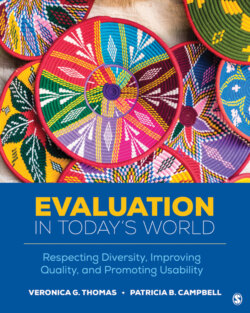Читать книгу Evaluation in Today’s World - Veronica G. Thomas - Страница 75
На сайте Литреса книга снята с продажи.
Activity: Ethical “Blind Spots” in Evaluation
ОглавлениеSezer and colleagues (2015) delineated various sources of ethical blind spots. After a review of these sources of ethical blind spots, summarized as follows, organize into small groups. Then discuss them as sources of evaluator blind spots. Give specific examples of how these sources might affect evaluators’ sensitivities and course of action in practice.
Implicit biases: These include attitudes or stereotypes that affect individuals’ understanding, actions, and decisions in an unconscious manner and can lead those individuals to act against their ethical values.
Temporal distance: Individuals overestimate the extent to which they will behave ethically in the future; therefore, temporal distance from decisions with ethical dimensions can be a source of unintentional ethical behavior.
Failure to notice others’ unethical behavior: Certain factors lead people to ignore the unethical behaviors of others including self-serving biases (e.g., if unethical behavior benefits them), outcome bias, the presence of intermediaries, and gradual erosion of ethical behavior; actions that produce negative outcomes are perceived as more unethical than similar actions that produce positive outcomes.
Another aspect that Sezer et al. (2015) discussed was the slippery slope effect or the gradual deterioration of ethical behavior. Here, individuals are more likely to justify small ethical indiscretions than major ones; however, over time, as they justify more and more, they can be led to justify even big indiscretions. When faced with abrupt and large dilemmas (rather than those that gradually increase), individuals are less likely to be unethical.
There are strategies that an evaluator can use to overcome ethical blind spots and be able to better identify ethical issues in real time. Among these are active listening (i.e., hearing a speaker and avoiding premature judgment, asking questions, reflecting understanding, clarifying information by restating a paraphrased version of the speaker’s message, and summarizing the conversation), imagining the perspectives of others, and practicing cultural humility and openness to others’ points of view.
A second aspect affecting evaluators’ ethical sensitivity is their ability to identify the particular ethical value(s) underlying the issue under consideration. After gaining awareness of a potential ethical issue, evaluators need to reflect by asking themselves what ethical values are being compromised. In other words, an evaluator must first recognize there is an event to react to and then define an event as having an ethical dimension. Identify any ethical issues that might be facing the evaluator in the case study that follows.
